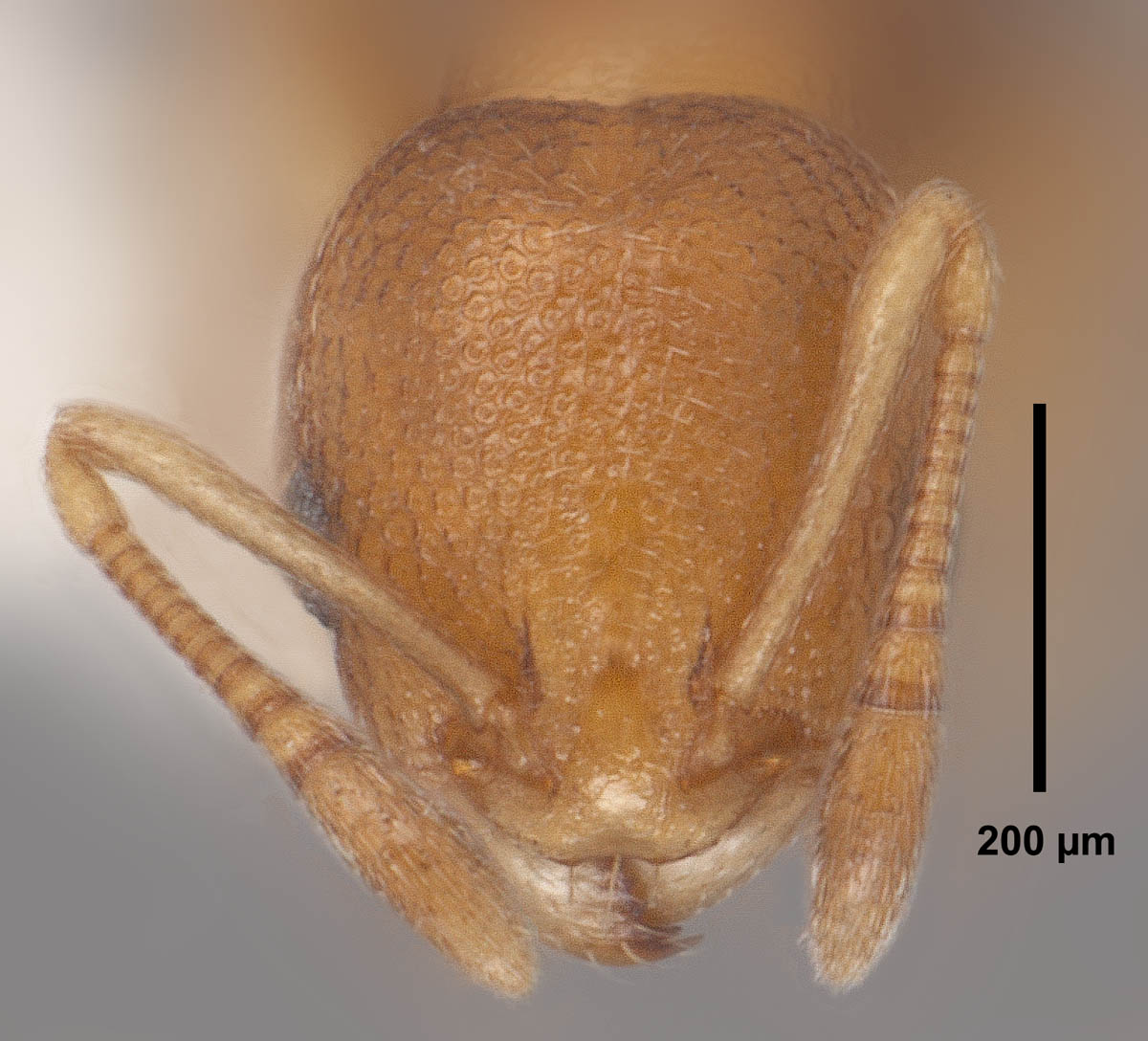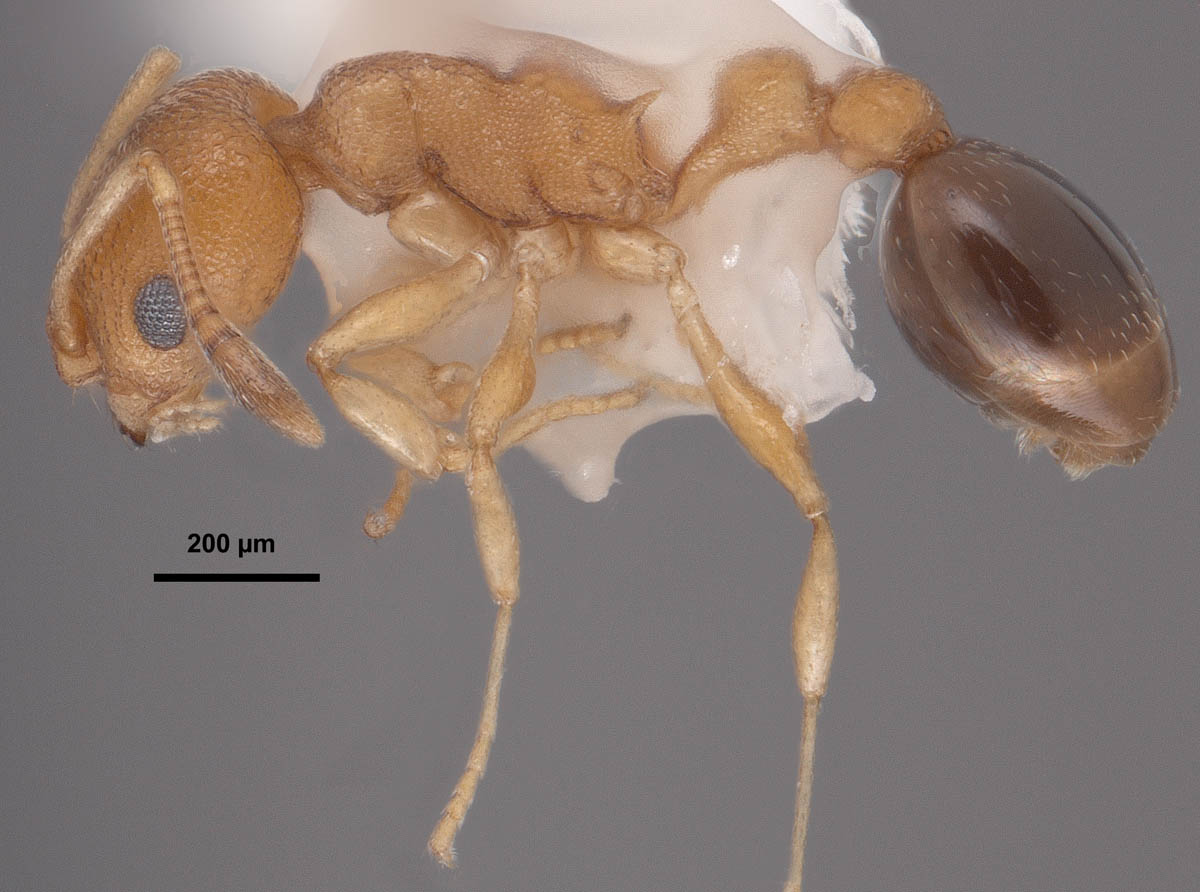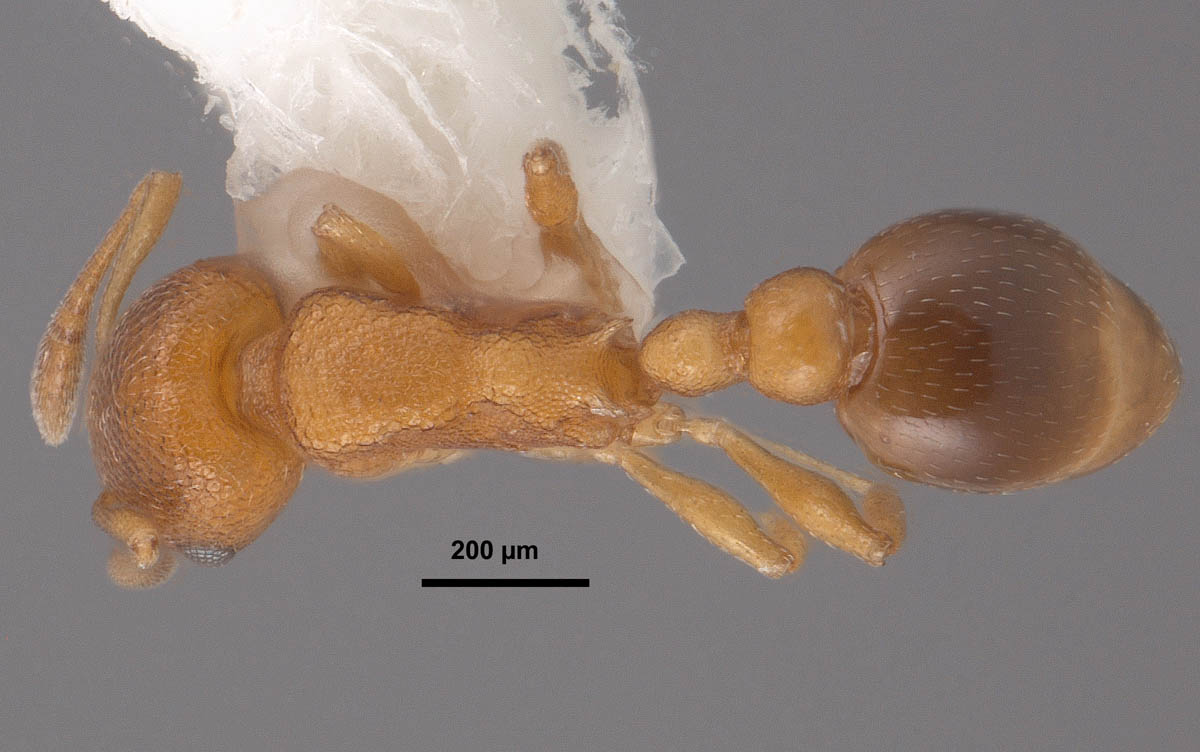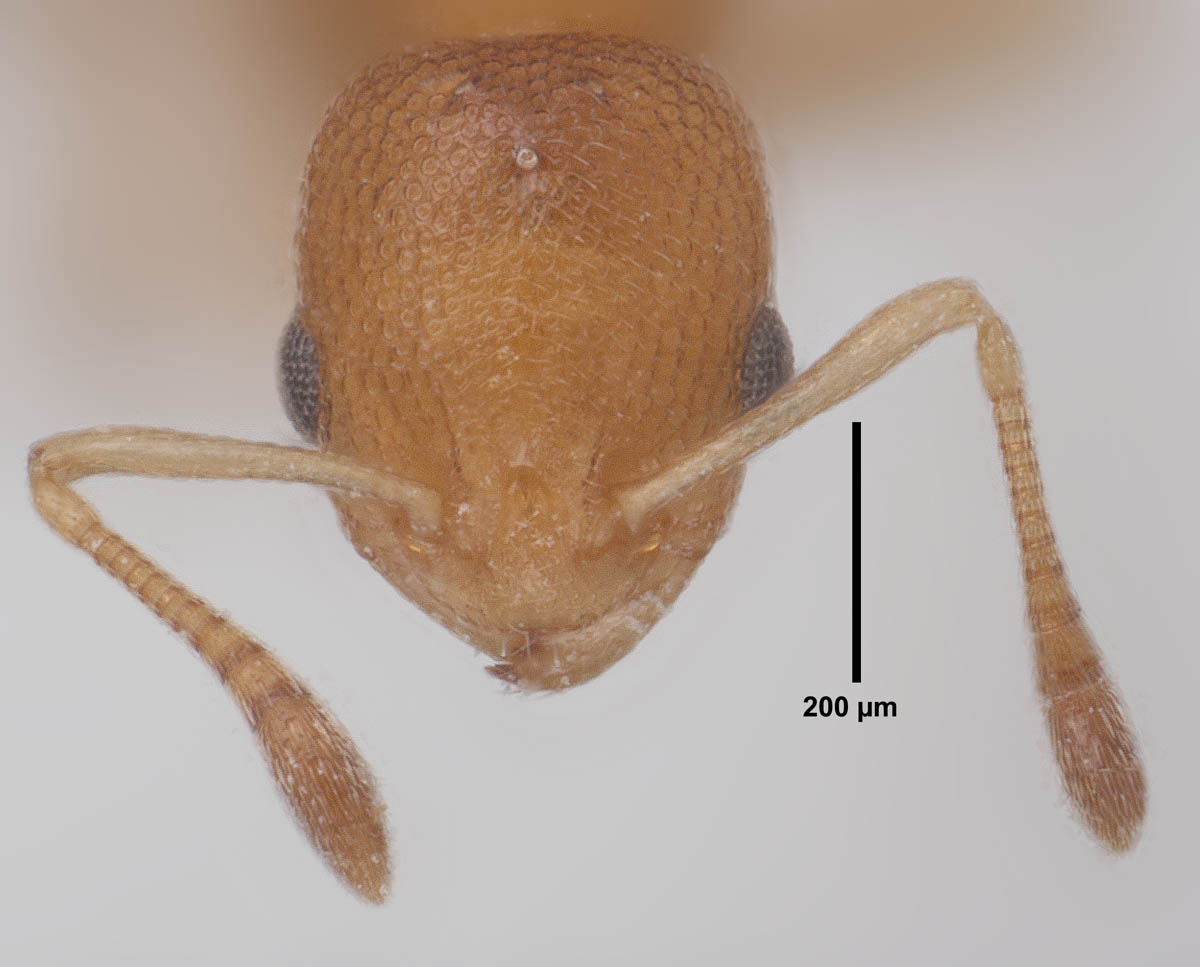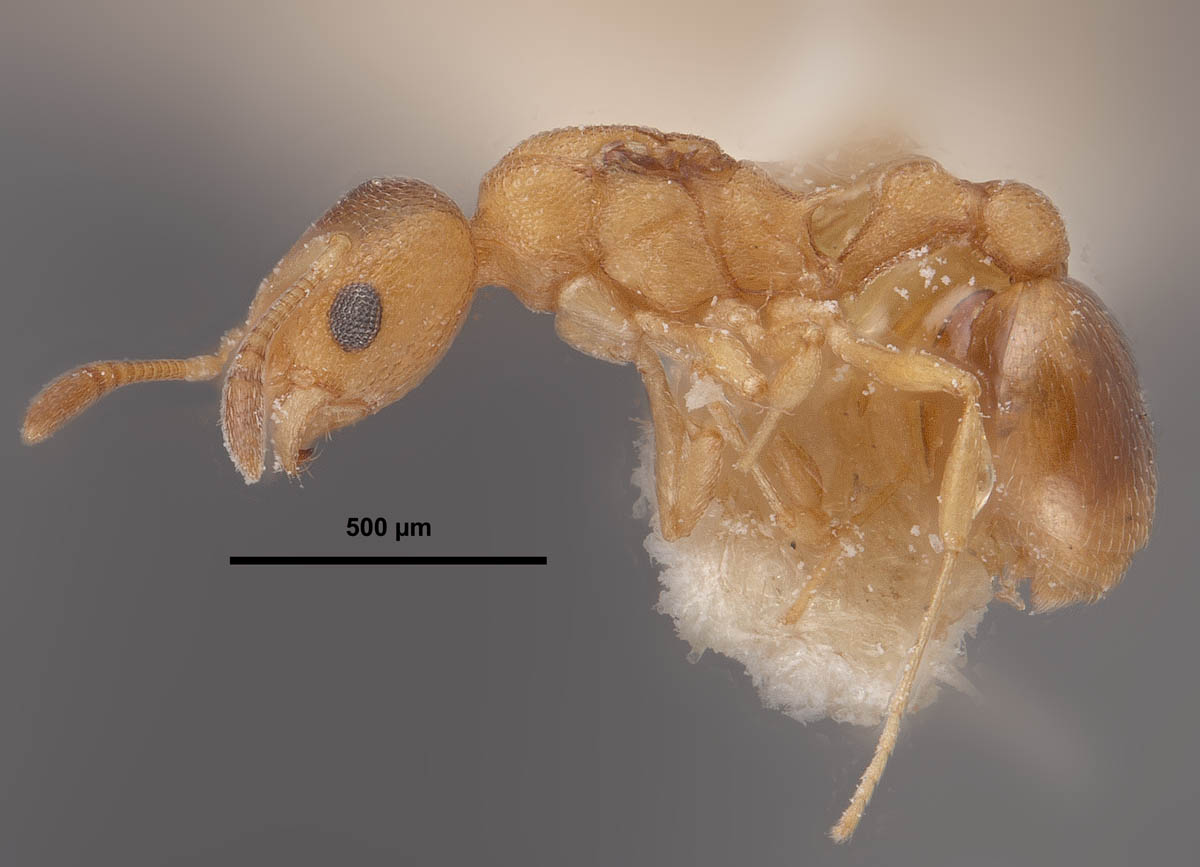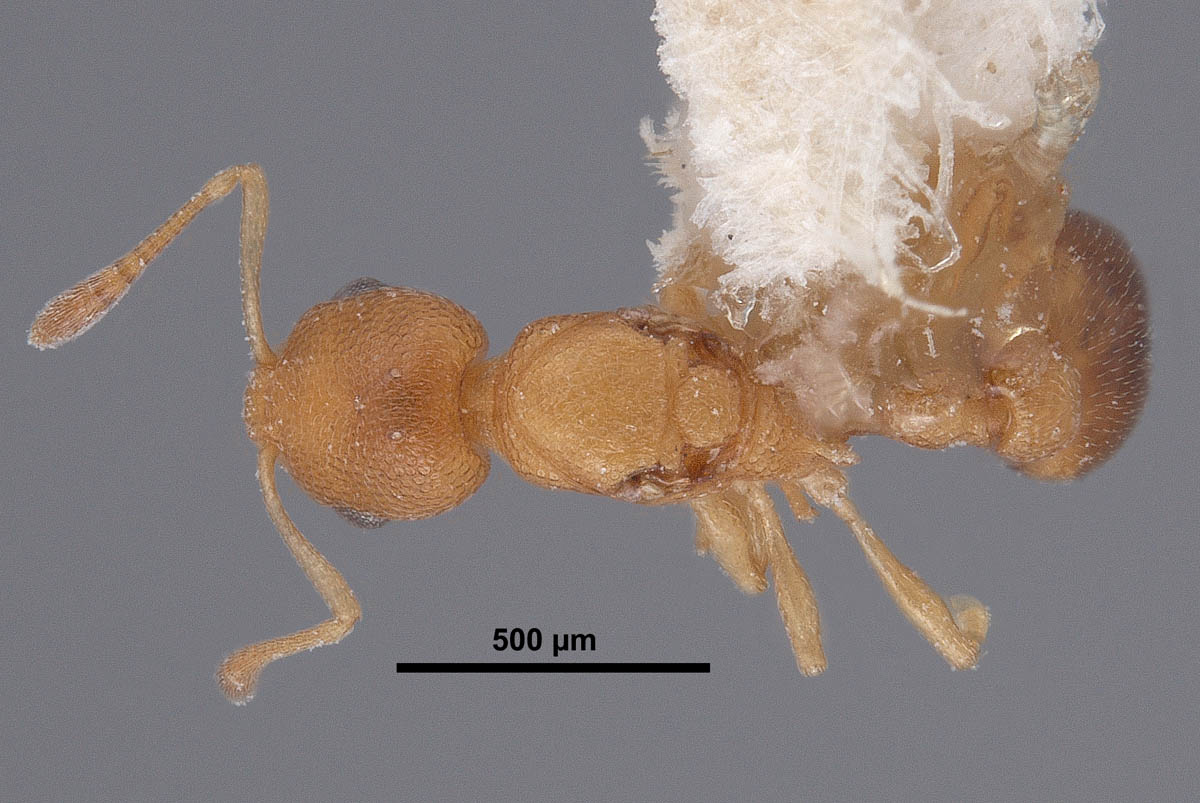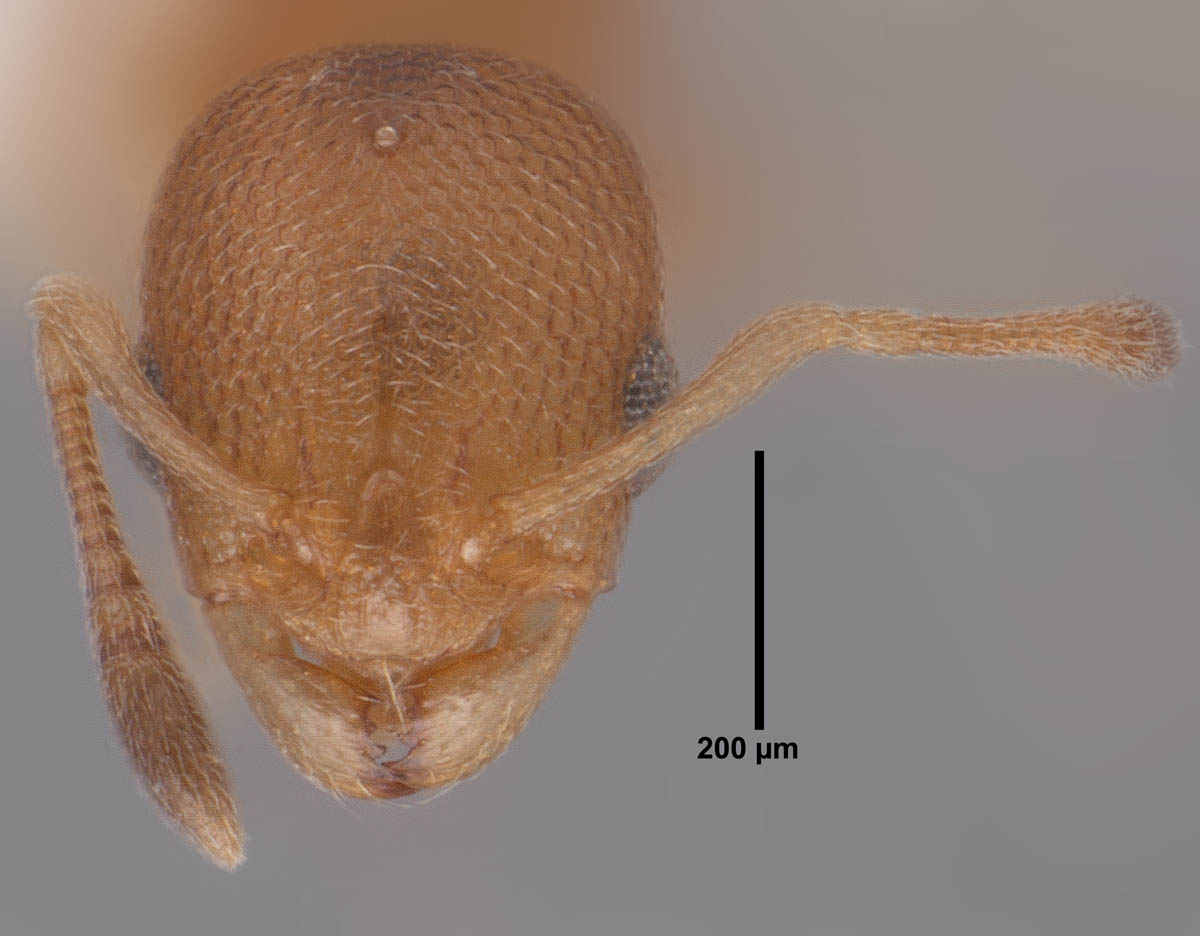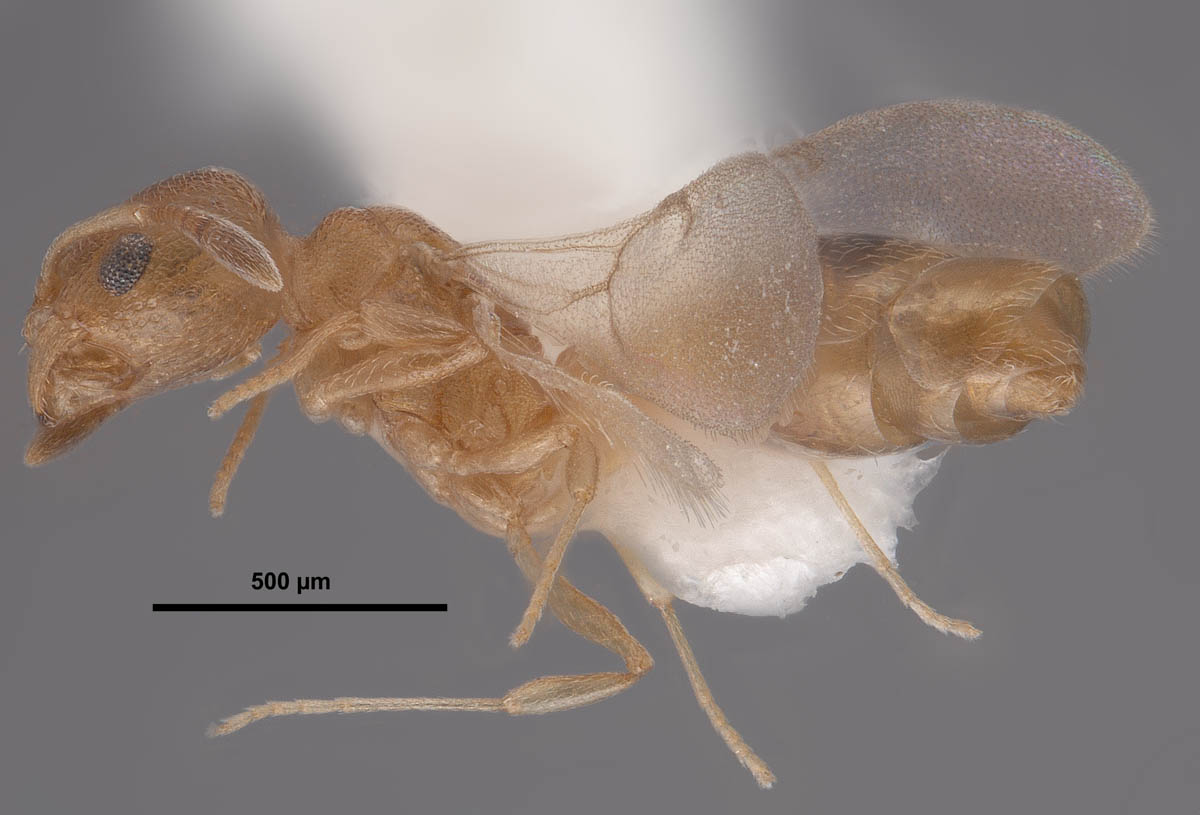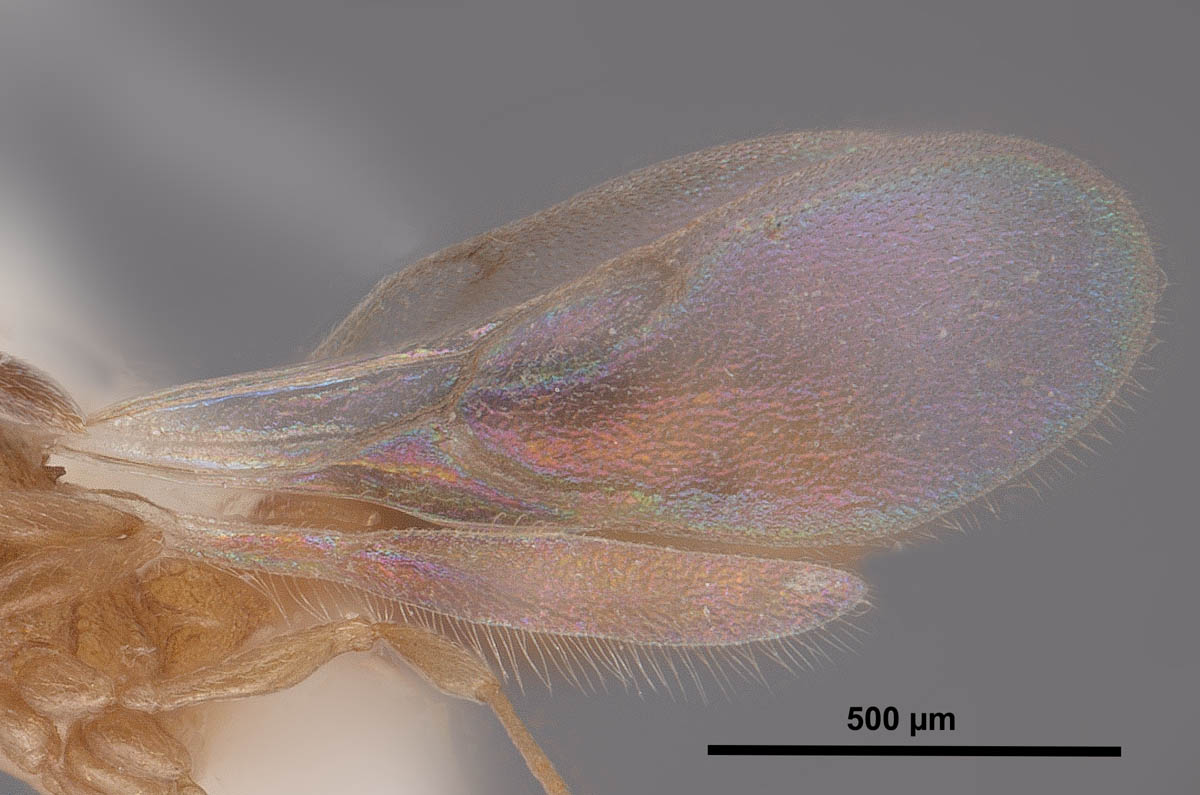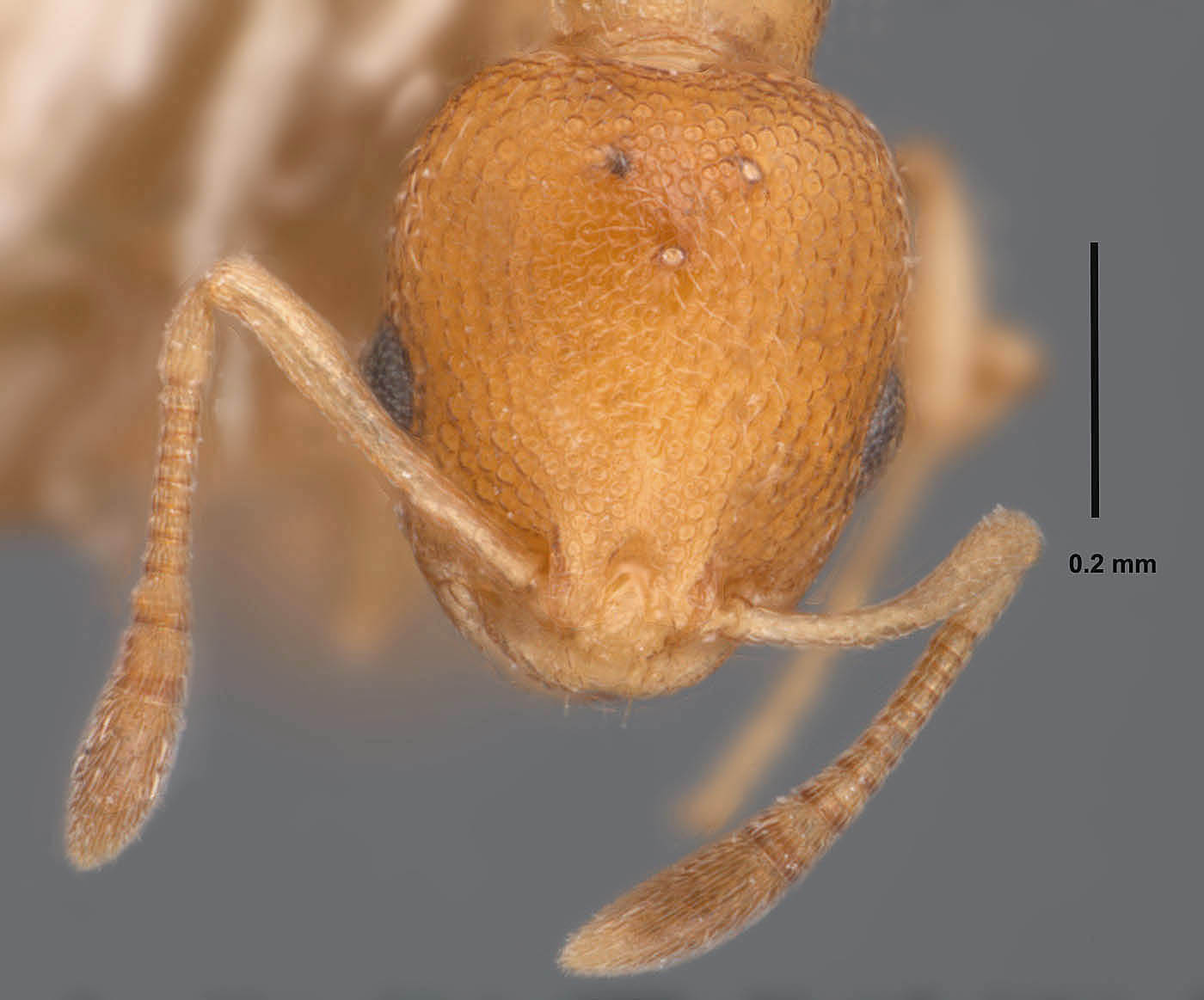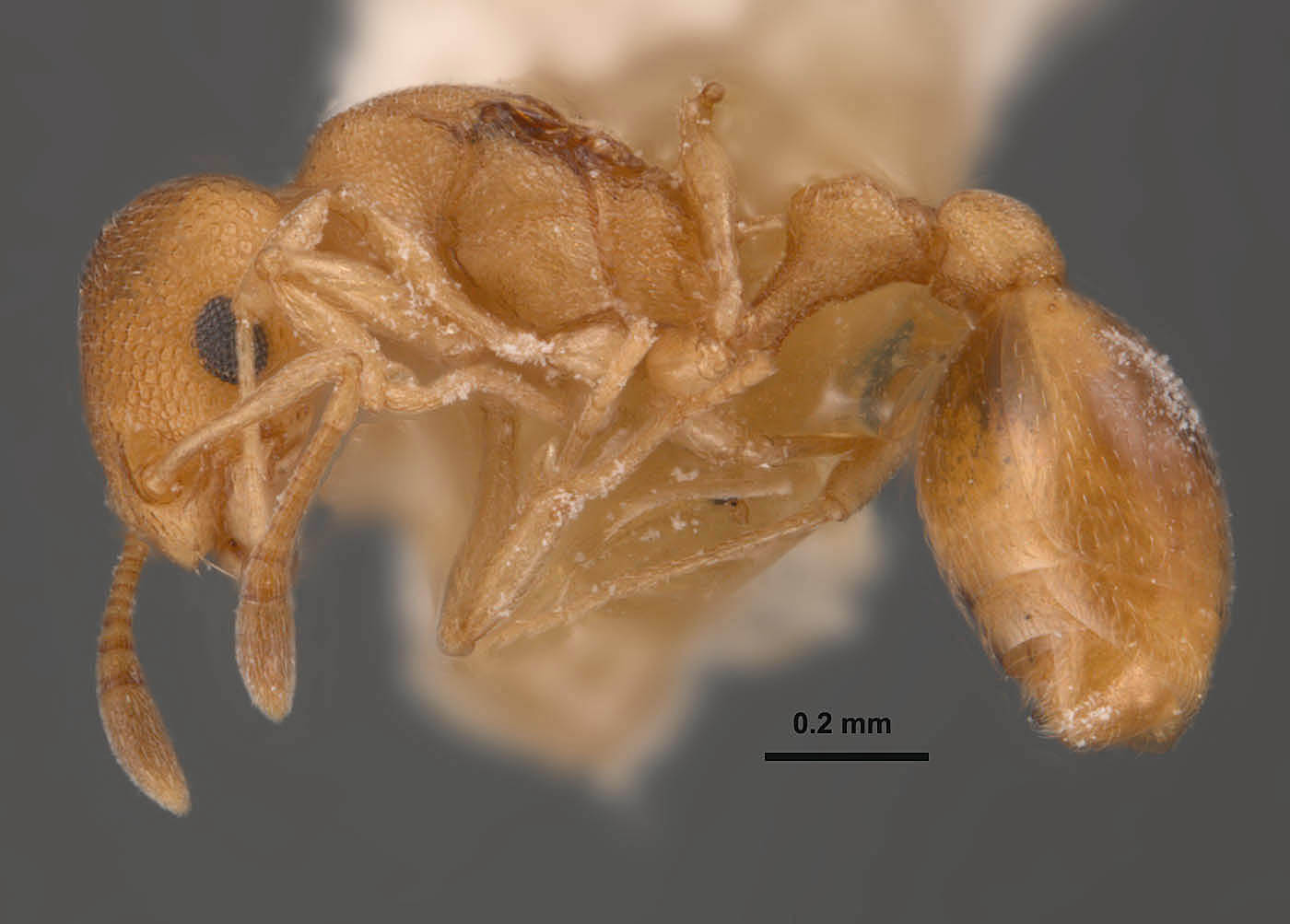Subfamily MYRMICINAE "yellow sneaking ant" Authors: Joe A. MacGown and Ryan J. Whitehouse |
||
Cardiocondyla wroughtonii, full face view of a worker (FL, Broward Co.) (photo by Ryan J. Whitehouse & Joe MacGown) |
Cardiocondyla wroughtonii, lateral view of a worker (FL, Broward Co.) (photo by Ryan J. Whitehouse & Joe MacGown) |
Cardiocondyla wroughtonii, dorsal view of a worker (FL, Broward Co.) (photo by Ryan J. Whitehouse & Joe MacGown) |
Cardiocondyla wroughtonii, full face view of a dealate queen (FL, Orange Co.) (photo by Ryan J. Whitehouse & Joe MacGown) |
Cardiocondyla wroughtonii, lateral view of a dealate queen (FL, Orange Co.) (photo by Ryan J. Whitehouse & Joe MacGown) |
Cardiocondyla wroughtonii, dorsal view of a dealate queen (FL, Orange Co.) (photo by Ryan J. Whitehouse & Joe MacGown) |
Cardiocondyla wroughtonii, full face view of an alate queen (MS, Pearl River Co.) (photo by Ryan J. Whitehouse & Joe MacGown) |
Cardiocondyla wroughtonii, lateral view of an alate queen (MS, Pearl River Co.) (photo by Ryan J. Whitehouse & Joe MacGown) |
Cardiocondyla wroughtonii, view of the wings an alate queen (MS, Pearl River Co.) (photo by Ryan J. Whitehouse & Joe MacGown) |
Cardiocondyla wroughtonii, full face view of a queen (MS, Pearl River Co.) (photo by Joe A. MacGown) |
Cardiocondyla wroughtonii, lateral view of a queen (MS, Pearl River Co.) (photo by Joe A. MacGown) |
|
Introduction Cardiocondyla wroughtonii (Forel, 1890) (Myrmicinae), the yellow sneaking ant, is a tiny, yellow tramp ant that can be found worldwide. It is not considered to be a pest, nor has not been shown to have negative environmental effects Taxonomic History Diagnosis Identification Queen: Minute, slightly larger than workers: TL ≈ 1.90-2.0mm,HL 0.51-0.53mm, HW 0.41-0.44mm, SL 0.35-0.36mm, EL 0.12-0.13mm, MeSL 0.63-0.69mm (n= 5) (MEM specimens). Yellowish-brown with a brown band on the first gastral tergite remainder of the gaster slightly darker than the body. Head longer than wide, with large shallow, tightly interwoven foveolate reticulation; with scattered, short, appressed pubesecence; eyeslarge, located on sides of head just below midline of the head; 3 small ocelli present, occasionally with dark pigmentation around their bases; mandibles with five teeth; clypeus distinctly raised above the surrounding areas; scapes not reaching the occipital border; antennae 12-segmented with a 3-segmented club. Mesosoma, enlarged with four wings or wing scars, with shallow foveolate reticulation; scattered, fine, appressed pubescence; longer erect setae lacking; propodeum with stout spine on each side; spines about as long as the width between their bases. Wings simple, lacking closed cell. Waist 2-segmented, with fine, appressed pubescence, lacking erect setae; petiole, squarish in profile, with a ventral, median process, with foveolate reticulation; postpetiole circular (in lateral view), mostly shiny, with a medial, lateral notch or concave impression on the anterior margin in the lateral view. Gaster shiny with a few, short appressed setae; apex with a small cluster of setae; sting present. Workers of C. wroughtonii can be recognized by their small size, yellowish color, the clypeus being flattened and projecting over mandible, somewhat enlarged apical funicular segment, lack of long erect setae on the head and body, and presence of propodeal spines. Some minor workersof Pheidole are similar in appearance, but differ by not the clypeus not being flattened and usually having erect setae on the body. Temnothorax species in this region differ by having distinct pilosity present on the dorsum of the body. Cardiocondyla wroughtonii can be differentiated from the other four species of Cardiocondyla reported from the southeastern US by its color, which is predominately yellowish brown, but sometimes with some dark coloration on the first gastral tergite, its having a distinct metanotal groove, relatively short antennal scapes; and relatively long propodeal spines. Original Description Biology and Economic Importance At the moment, C. wroughtonii is not considered to be a pest. Also, because so little is known about C. wroughtonii, any environmental impact it may have is currently unknown. Pest Status Distribution Native Range: Tropical Asia and Australia Australian: Australia, French Polynesia, Hawaii, New Caledonia, Papua New Guinea (AntWeb.org and Seifert, 2003). U.S. Distribution: FL, GA, HI, LA, MS, TX (AntWeb.org, AntWiki.org and MEM). Acknowledgments Literature Cited Borgmeier, T. 1937. Cardiocondyla emeryi Forel no Brasil, e a descoberta do macho ergatoide desta especie (Hym. Formicidae). Revista de Entomologia (Rio de Janeiro) 7:129-134. Forel, A. 1890. Aenictus-Typhlatta découverte de M. Wroughton. Nouveaux genres de Formicides. Annales de la Société Entomologique de Belgique 34:cii-cxiv. Forel, A. 1892. Le mâle des Cardiocondyla [sic] et la reproduction consanguine perpétuée. Annales de la Société Entomologique de Belgique 36:458-461. Forel, A. 1892. Die Ameisenfauna Bulgariens. (Nebst biologischen Beobachtungen.). Verhandlungen der Kaiserlich-Königlichen Zoologisch-Botanischen Gesellschaft in Wien 42:305-318. Forel, A. 1903. Les Formicides de l'Empire des Indes et de Ceylan. Part X. Journal of the Bombay Natural History Society 14:679-715. Kugler, J. 1984 ("1983"). The males of Cardiocondyla Emery (Hymenoptera: Formicidae) with the description of the winged male of Cardiocondyla wroughtoni (Forel). Israel Journal of Entomology 17:1-21. Smith, D. R. 1979. Superfamily Formicoidea. Pp. 1323-1467 in: Krombein, K. V.; Hurd, P. D.; Smith, D. R.; Burks, B. D. (eds.) 1979. Catalog of Hymenoptera in America north of Mexico. Volume 2. Apocrita (Aculeata). Washington, D.C.: Smithsonian Institution Press, pp. i-xvi, 1199-2209. Smith, D. R. 1979. In Catalog of Hymenoptera in America north of Mexico. Smithsonian Institution Press, Washington D. C. Vol. 2, pp. 1323-1427. Wilson, E. O.; Taylor, R. W. 1967. The ants of Polynesia (Hymenoptera: Formicidae). Pacific Insects Monograph 14:1-109. Links
AntWeb |
||


